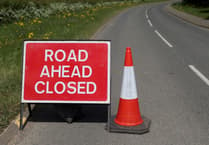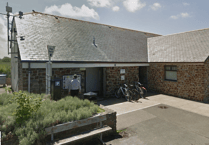PRIOR to the coronavirus lockdown, my interest in railways was more of a passive curiosity for the history of it, in the same way I have a passive curiosity for the history of North Korea or the history of ITV, although both are very interesting.
Then, as now, I enjoyed railway travel, particularly as I hate long distance driving and I am capable of getting lost in a supermarket, meaning that it’s better for my blood pressure and everyone else that on the very rare occasion I go on an adventure, I am in the capable hands of an experienced train driver and his crew.
Much like many of you, the turn of 2020, and the onset of the coronavirus pandemic, particularly those weeks that felt like they lasted forever where we were locked down, I found myself revisiting old interests and discovering new ones.
A new series of Walking Britain’s Lost Railways with Rob Bell on Channel 5 is what set me off, and as soon as we were moderately uncaged and allowed to see one other person outside, I would hot-foot it down the Camel Trail with a friend of mine, Jono, partly for the purposes of exercise and photographing every inch of the routes we took, and partly to bore him senseless with the story of the line. My work in converting him into a railway enthusiast is still ongoing.
The day my eyes were opened was when I asked a question out loud as we approached Boscarne Junction for the umpteenth time (we walked the Camel Trail a fair few times): “If the railway had never gone, would we appreciate what we don’t have now in the same way?” – otherwise known as, “If nothing had ever changed with the railway and it was always there, would we appreciate it in the same way we yearn for its return?”.
With that in mind, I made a conscious effort to appreciate the things around me a bit more; the things in my great little town that I’d perhaps taken for granted.
One of those was the Bodmin and Wenford Railway, which at that point, I had only visited once; an old lady called Gloria, on the road above where I grew up, took me and my sister for a ride on the trains when looking after us for Dad when I was three or four. My memory of it is very hazy.
I’ve been a few times since, and while a busy timetable has so far thwarted my ambition to volunteer for this wonderful preservation society in Bodmin as well as invites from another friend of mine to go on one of the diesel days, it’s been a terrific day out. To describe the Bodmin and Wenford Railway is to use the words “a living museum”; for that is exactly what it is.
It is a museum in the sense that the aesthetic of the lovingly restored station deliberately harks back to the 1950s, the rolling stock is of a vintage you won’t see on the mainline, comprising of both steam trains and early generation diesel stock, with a few clay wagons thrown in for good measure.
It is a living museum resplendent with oddities; from the catering coach on the sidings adjacent to platform two, available for consuming the pasty or coffee bought from the shop away from the elements, to the GWR Autocoach carriage, the various locomotives dotted around, some operational, others awaiting restoration, and some there for convenience, such as the old sleeper coach situated to one side for use in the event volunteers from other railways pay a visit and need somewhere to stay.
My latest visit to this terrific place of wonder and history came on Father’s Day, when I treated my Dad to a trip on the Bodmin and Wenford Railway; something that despite living in or near Bodmin for all his life, was a place he’d never visited.
On this particular day, our near-two-hour journey would see us transported by a train owned by a celebrity, no less than the man who brought Rick Astley and Kylie Minogue to fame as one third of Stock Aitken Waterman and later pop idol judge, Pete Waterman, with the locomotive on loan to Bodmin and Wenford Railway while their own steam locomotives were in for essential works.
Much like how the Bodmin and Wenford Railway preservation group saved the slice of railway history that is this terrific attraction in the 1980s, the story of locomotive 5553 is, in itself, a story of salvation from the scrapheap.
In August 1983, the year before the Bodmin Railway Preservation Society was launched, this 4575 class Class 2-6-2T locomotive dating from 1928 was sitting in a scrapyard at Woodham Bros, Barry, Wales. Its once former resplendent colour was now covered with rust, and by 1988, while still awaiting its date with the blowtorch, it was little more than a decrepit relic of a condition you’d think no one would possibly want to bother saving.
Indeed, this particular train was the longest resident at the Woodhams railway graveyard, having been withdrawn from St Blazey shed in November 1961, sold for scrap and moved to Wales in March 1962 and being rescued in January 1990.
It took twelve years to restore 5553, and from 2002 it was based at West Somerset Railway before later being moved to Crewe in 2012 for another overhaul.
After being brought back to steam for revenue earning service in December 2021, 2023 has seen 5553 revisit Cornwall, where she last worked before being retired 60 years previous while the Bodmin and Wenford locomotives await overhaul.
The journey itself comprises what is effectively two branch lines, interspersed with a 45-minute interval on this occasion, which was ample time to get lunch from the excellent Cornish Rail Co café and raid the gift shop for all manner of souvenirs.
First, it was a sojourn on the line to Boscarne Junction, where historically was the point where the GWR branch line of which the remnants comprise the Bodmin and Wenford line met the London and South Western Railway line to Wadebridge. During this part of the trip we met a nice chap from Stockport, who was exploring the railway and was something of a railway enthusiast. Even I as the self-styled railway history enthusiast learned something new; the gradients that the steam train had to haul were among the steepest of any heritage railway.
After a brief interlude where the train turns around at Boscarne Junction, where in the 1990s Bodmin and Wenford built a replica Southern Railway era station, it is back to Bodmin General for the 45-minute interlude and lunch.
Then its time for trip two – this time to Bodmin Parkway, where the Bodmin and Wenford line meets the GWR Cornish mainline. Here I came off the train for a moment, hopeful to capture another photo of the scene where modern trains meet their predecessors like I had done before, expecting a GWR train on platform two to juxtapose the one I’d just stepped off for a moment.
But perhaps appropriately, the next train on platform two was cancelled.
Upon a return to Bodmin General, thus ended the Father’s Day gift, and I got the impression Dad preferred it to something typical like socks. As we ventured back home, for a cup of tea and to check on the cats (one appropriately named Mr Socks), I reflected on the great day out I had at the living museum almost on my doorstep.
A day out I wanted to share the story of as I continue my vow to explore the great things in my home town that I spent too many years taking for granted.




